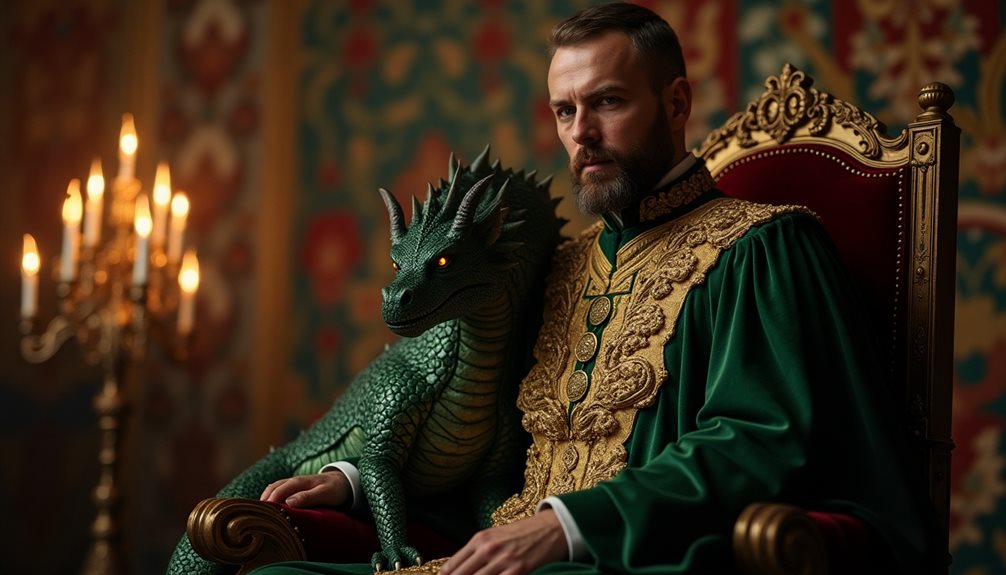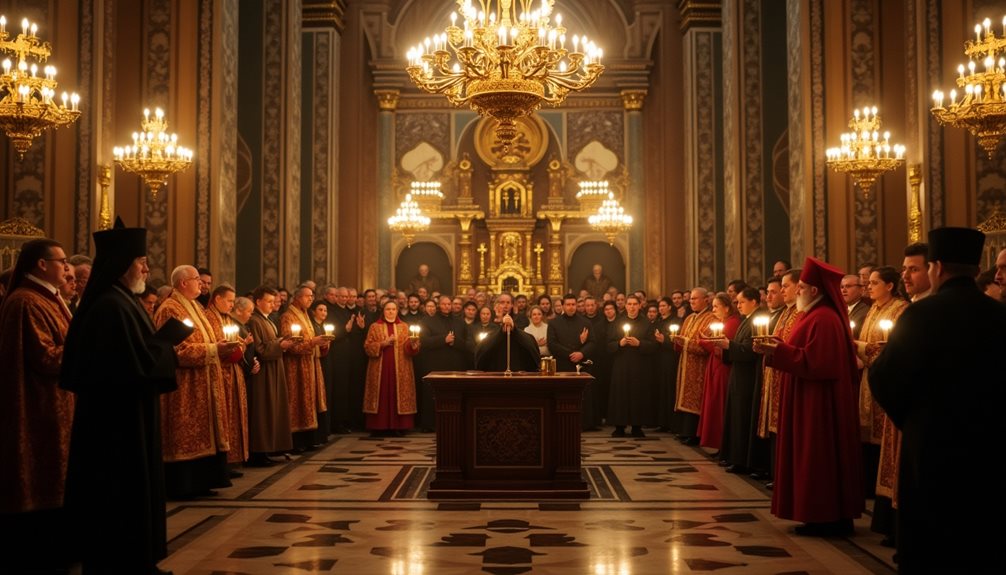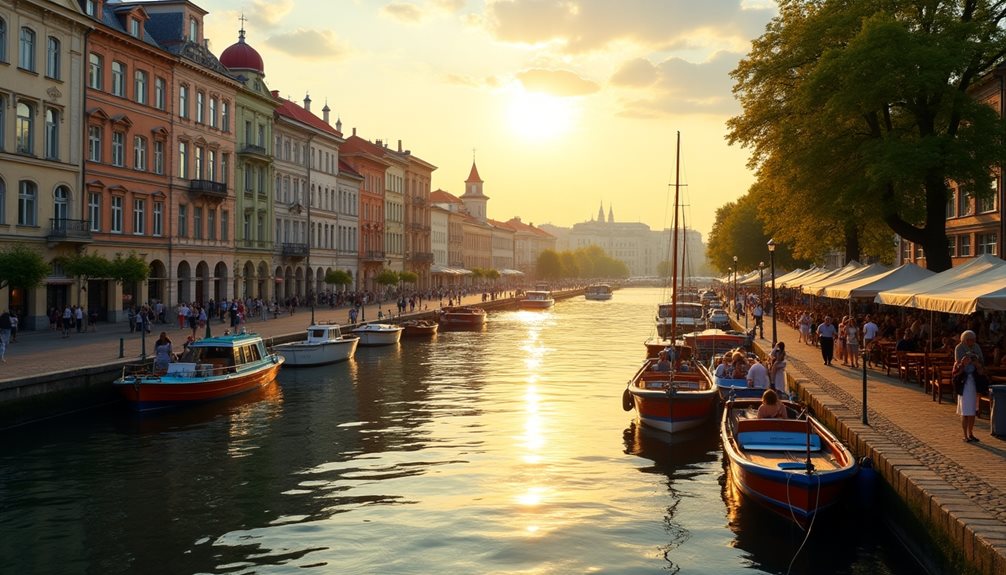The double-headed eagle is a symbol with deep historical roots and rich cultural significance in Russia. While this emblem originated in Byzantine art and was used in various cultures, its adoption in Russia marked an important moment that linked the country to a broader tradition of spiritual and cultural heritage.
Historical Origins and Introduction to Russia

The double-headed eagle is one of the oldest and most enduring symbols in history, with its earliest known depictions found in ancient Mesopotamian artifacts dating back over 4,000 years. This powerful icon later gained profound significance in the Byzantine Empire, where it was used as an emblem of imperial power. In Byzantine art and heraldry, the two heads of the eagle symbolized the unity and balance between spiritual authority (the church) and temporal power (the emperor), as well as the empire’s dominion over both the eastern and western parts of the known world.
The introduction of the double-headed eagle into Russian culture occurred in the late 15th century during the reign of Ivan III, also known as Ivan the Great, Grand Prince of Moscow. This transition was closely linked to his marriage in 1472 to Sophia Paleologue, the niece of Constantine XI, the last Byzantine Emperor. Sophia’s arrival in Moscow brought with it a significant influx of Byzantine cultural, religious, and political traditions, which Moscow sought to inherit as the “Third Rome” — a successor to the fallen Byzantine Empire.
In 1497, Ivan III officially adopted the double-headed eagle as a state symbol by imprinting it on his royal seal for the first time. This marked a deliberate effort to align the emerging Russian state with the legacy and authority of Byzantium. The adoption of this symbol reflected Moscow’s aspirations to be seen not only as a powerful political entity but also as a center of Orthodox Christianity and spiritual authority. Over time, the double-headed eagle became deeply embedded in Russian national identity, symbolizing sovereignty, continuity, and protection.
Symbolic Meanings in Russian Tradition
- Two Heads Facing East and West:
The eagle’s dual heads look in opposite directions, symbolizing vigilance over vast territories that span Europe and Asia. This reflects Russia’s geographical expanse across two continents and its historical role as a bridge between East and West. - Unity of Spiritual and Earthly Realms:
The two heads also represent harmony between religious authority and secular governance. This duality emphasizes Russia’s unique intertwining of Orthodox Christian faith with political power, suggesting that both spheres are essential for the nation’s stability and prosperity. - Crowns:
The emblem features two crowns resting on each head, connected by a ribbon to a larger central crown above. These crowns symbolize sovereignty, unity, and completeness. Historically, they have represented the unification of different Russian principalities under one ruler and the divine right of the monarch. - Scepter and Orb:
The eagle holds a scepter and orb in its talons—traditional symbols of royal authority and guardianship. The scepter represents sovereign power and governance, while the orb signifies dominion over the earthly realm under divine sanction. Together, they affirm the ruler’s responsibility to protect and care for the nation. - Saint George on the Shield:
At the center of the eagle’s chest is a shield depicting Saint George slaying a dragon. Saint George is a revered figure in Russian Orthodox tradition symbolizing courage, protection against evil, and triumph over adversity. His image reinforces themes of bravery and moral strength within the broader symbolism of the double-headed eagle.
Development of the Double-Headed Eagle Through Russian History
Early Usage
The double-headed eagle first appeared in Russian heraldry during the late 15th century, prominently under Ivan III (Ivan the Great). After his marriage to Sophia Palaiologina, a Byzantine princess and niece of the last Byzantine emperor, Russia adopted the symbol as a claim to the legacy of the Byzantine Empire. The double-headed eagle was featured on official seals, coins, and state documents, symbolizing the continuity of imperial authority and a connection to ancient traditions. This emblem represented the unity of church and state as well as the dual sovereignty over both the East and West.
Cultural Significance
Over time, the double-headed eagle transcended its role as a mere state emblem to become a profound cultural symbol. It was widely interpreted as a protector of Orthodox Christianity, which was central to Russian identity. The two heads were often understood as guardians watching over both secular governance and spiritual faith. This symbolism reinforced the idea of Moscow as the “Third Rome,” the spiritual and political successor to Rome and Constantinople. The emblem carried a message of divine protection and the enduring nature of Russian culture and religion.
Artistic Depictions
Throughout centuries, Russian artists and craftsmen enriched the double-headed eagle with increasingly elaborate details. Starting from a relatively simple design, it evolved to include crowns atop each head, symbolizing sovereignty; a larger central crown representing the unity of Russia; scepters and orbs in the talons denoting authority and power; and sometimes a shield bearing Saint George slaying the dragon, linking it to Moscow’s patron saint. These additions highlighted Russia’s imperial ambitions and spiritual heritage. The emblem was displayed on everything from royal garments and state flags to architectural elements in palaces and churches.
Modern Times
Following the Russian Revolution in 1917, the double-headed eagle was replaced by Soviet symbols such as the hammer and sickle. However, after the dissolution of the Soviet Union in 1991, Russia reinstated the double-headed eagle as its official coat of arms in 1993. This restoration signified a return to historical roots and a renewed emphasis on national identity grounded in tradition. Today, it remains a powerful icon representing Russia’s sovereignty, historical continuity, and cultural pride.
Broader Cultural Context
The double-headed eagle is not unique to Russia; it has been used by various Eastern European states and empires, including the Byzantine Empire, the Holy Roman Empire, and Serbia. However, Russia’s version stands out for its intricate symbolism that blends spiritual meaning with political authority. Unlike some other iterations focused primarily on imperial power, Russia’s emblem emphasizes guardianship over both sacred faith and temporal rule.
This combination reflects Russia’s historical self-image as both a religious bastion and a unifying state. The two heads symbolize vigilance in multiple directions—over geographic realms and ideological domains—while the crowns and regalia represent legitimate authority sanctioned by divine right. Thus, the double-headed eagle encapsulates Russia’s deep respect for its past, its Orthodox Christian heritage, and its aspiration to maintain unity across diverse peoples and lands.
The Double-Headed Eagle: A Timeless Emblem of Russia’s Identity and Power
The double-headed eagle is far more than a decorative emblem; it is a powerful symbol that embodies the essence of Russia’s history, culture, and values. Rooted in ancient traditions and shaped by Byzantine heritage, this emblem represents vigilance over vast lands, the union of spiritual and political authority, sovereign rule, and steadfast protection. Over centuries, it has come to define Russia’s self-image as a guardian of Orthodox Christianity and a unifying force across diverse territories. Today, the double-headed eagle stands as a lasting icon of Russia’s enduring identity, its deep respect for tradition, and its ongoing role as a bridge between East and West.




